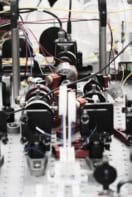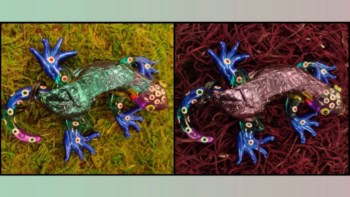Over thirty years ago the Russian physicist Victor Veselago predicted the existence of a "left-handed" material that would act on electromagnetic radiation in exactly the opposite way that conventional or "right-handed" materials do. The Doppler effect, Snell's law for refraction and other well-known optical phenomena would be reversed in such a material. Now David Smith and colleagues at the University of California at San Diego (UCSD) have made a left-handed material for the first time (to be published in Physical Review Letters). The material is made up of a series of thin copper rings and ordinary copper wire strung parallel to the rings.
Four years ago John Pendry of Imperial College, London, described how a composite copper structure could be used to create a material with negative electric permittivity, and more recently he proposed how the magnetic permeability could be made negative as well. Since the permittivity and permeability describe how the material responds to applied electric and magnetic fields, together they determine how the material will respond to an electromagnetic field. The UCSD team has now made a copper structure that exhibits this left-handed behaviour at microwave frequencies.



